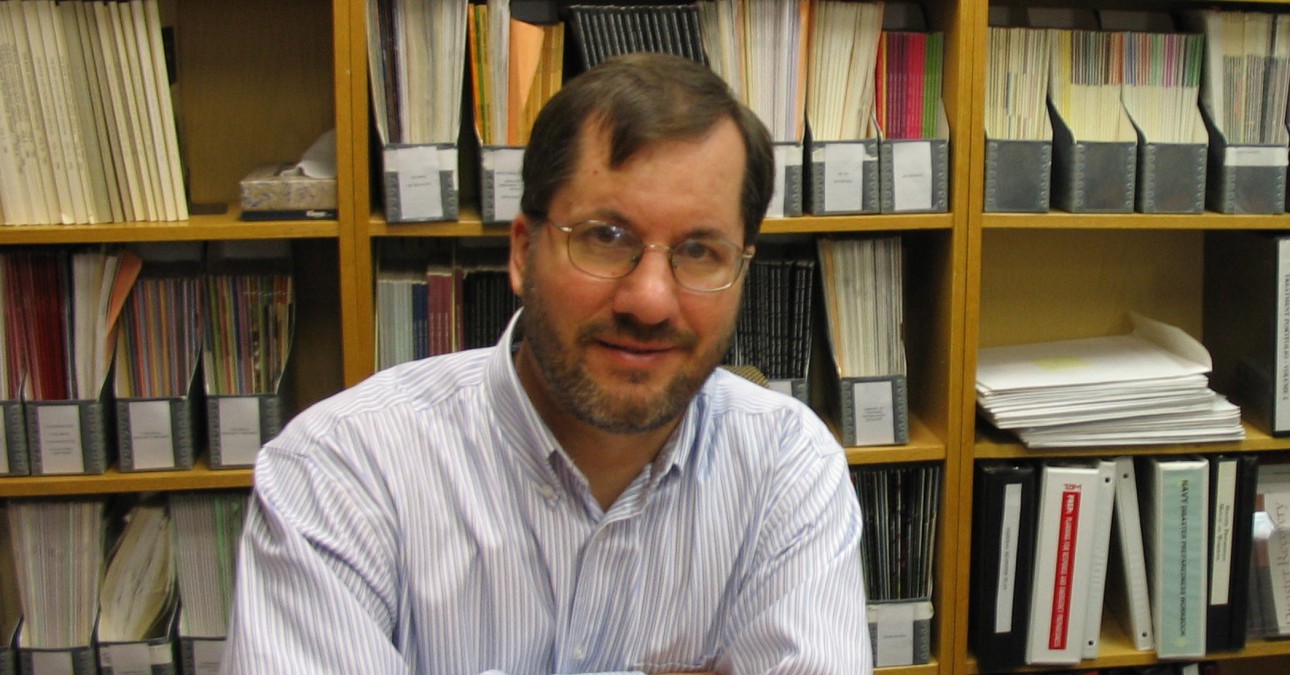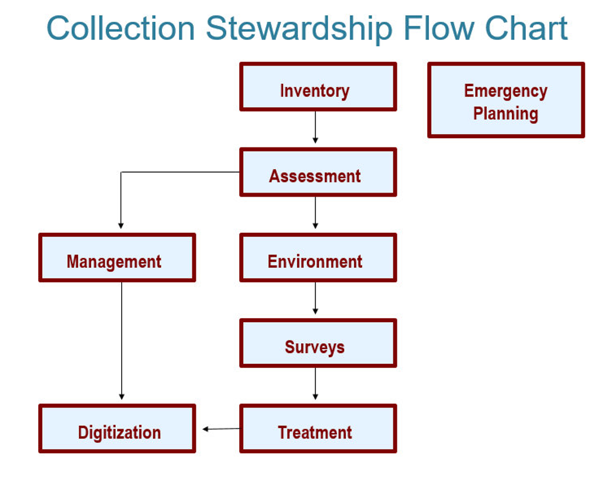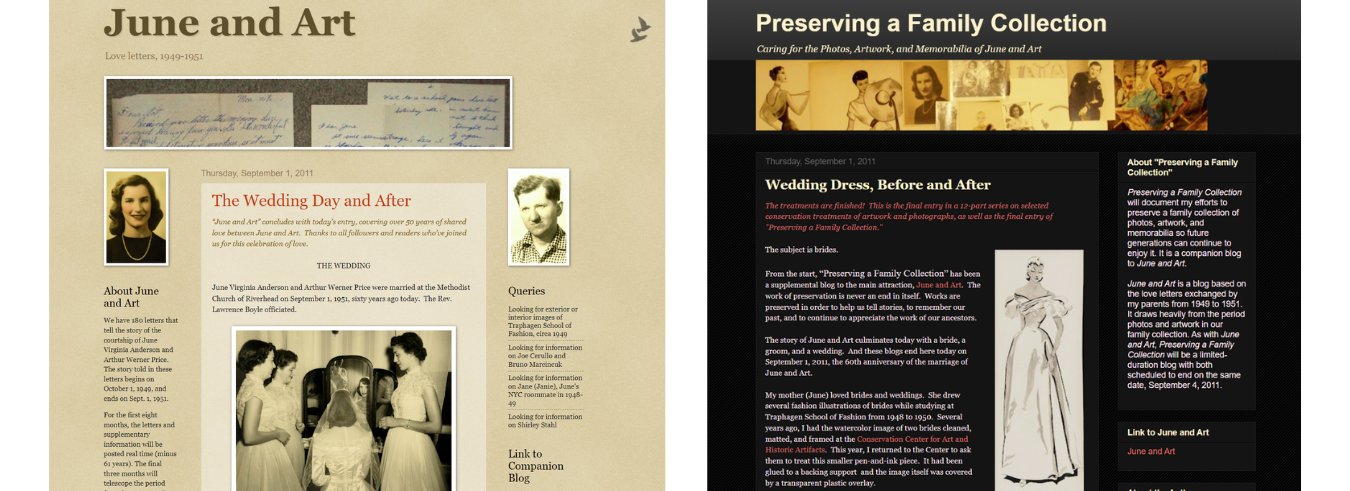
CCAHA’s Director of Development Retires after 25 Years
CCAHA Director of Development Lee Price is a collections shepherd. If you have partnered with CCAHA, you have likely encountered Lee’s guiding ways, helping to strengthen clients’ collections while gently nudging them toward their goals.
But after 25 years on the job, Lee is officially retiring this month.
“When I started at CCAHA, I instinctively aligned myself with the Preservation Services team, and it's remained that way ever since,” Lee said in a recent interview. “When I'm talking to clients, I'm really approaching it from the position of trying to figure out how best to improve their collection stewardship. And fundraising is entirely secondary to that. If fundraising is the best tool for them to use to incrementally upgrade their collection stewardship practices, then I'm here to help.”
It's those long-term relationships that have shaped Lee’s tenure leading CCAHA’s development program. Lee started as a consultant in 1998 and helped guide the job description for the new Director of Development position to prominently include assistance to potential clients and partners with their long-term planning, fundraising, and grant writing, in addition to the typical development work of raising funds for CCAHA itself.
“CCAHA's work has impact beyond the individual treatment projects clients bring us, or the plans our preservation specialists write,” said CCAHA’s Executive Director, Michelle Eisenberg. “Lee's career at CCAHA is emblematic of this — the partnerships he has built not only lead to funding that makes collections more accessible, but they also leave the organization in a stronger position to meet its preservation goals.”
Lee’s skill has not gone unnoticed by his peers. In 2021, he received the Spotlight Award from the Society of American Archivists, a lifetime achievement award Lee counts as one of his proudest moments. The award recognizes contributions of individuals working toward the greater good of archival collections and stewardship.
Listening Carefully, Making Connections
Many of those long-term relationships with clients and partners have grown into full-blown friendships over the years. Lee credits his librarian wife, Lisa, with helping him understand how to best interact with clients. When responding to queries from museums, libraries, and archives, he conducts a thorough interview, learning about their collections and listening deeply to identify their most critical needs.
“98% of the time, if I start talking to an organization about their needs, I'm going learn something about their collections that really connects with a true interest of mine. There's going to be something that I want to learn more about,” Lee said. “And usually, if they're finding the language to make it interesting to me, this same language will appeal to the peer reviewers who read the grants. Through these conversations, we inevitably bond over our shared enthusiasm for their collections.”
A recent example of Lee’s casual conversations turning into an amazing opportunity happened with the Edward Hopper House Museum and Study Center (Nyack, NY). While discussing collections and grant opportunities, the executive director of Hopper House mentioned that they had Edward Hopper’s first and last painter’s boxes. Lee immediately thought of colleagues and friends at the Winterthur/University of Delaware program in Art Conservation. Their conversation led to Hopper House connecting with the University of Delaware graduate program, creating an opportunity for a student to conduct a conservation science-based analysis of the dollops of paint remaining on the paint boxes, potentially offering deeper insight into the development of Hopper’s craft.
“In this case, CCAHA doesn't actually get any direct benefit out of the consultation,” Lee said. “We’re friends and we share a common interest in their collections — making sure they're preserved and making sure that they're accessible. It was a wonderful connection to make, and I'm very proud of it.”
A Model for Success
Looking back over the past two and a half decades, Lee’s list of professional accomplishments is long. He shared some of his greatest accomplishments, the first of which came when he was fairly new to the job. Working closely with colleagues at CCAHA, he created and acquired funding for a program known as the Philadelphia Stewardship Program, which has now served the region for over two decades. Through this service, more than 200 Philadelphia-area organizations have received preservation planning services and educational programming, enabling them to strengthen their collection stewardship.
Around this same time, he created a flow chart that graphically illustrated a number of collections care best practices. “While it’s just a tiny chart, it was the first time that this information was packaged in an easy-to-understand format,” Lee said. “I’ve used it constantly over the past twenty years.”

A few years after the Philadelphia Stewardship Program’s creation, Lee realized that its impact on collecting institutions was significant.
“In 2005, Heritage Preservation and the Institute of Museum and Library Services conducted a national survey called the Heritage Health Index, surveying collecting organizations across the country,” he said. “It was the first comprehensive survey ever conducted of the condition and preservation needs of the nation's collections.
“Through an analysis of their raw data, we learned that Philadelphia organizations far exceeded the national average in the quality of their collection stewardship practices. And we confidently believe that this was because of our model program.”
Amplifying Marginalized Voices
“In my grant assistance work, I’ve especially appreciated opportunities to amplify unheard and suppressed voices,” Lee said further reflecting on his accomplishments, apparent in his work with organizations such as Amerinda, the Blockson Collection at Temple University, the Hampton University Museum, Alabama State University, the Haitian Heritage Foundation, the Charles Sumner School Museum, the New York City LGBT Community Center, the William Way LGBT Community Center in Philadelphia, and the HBCU Library Alliance.
Lee’s work with the HBCU Library Alliance began in 2008, eventually leading to a major “Building Capacity” project to upgrade collection stewardship at dozens of HBCU libraries throughout the country. Also, he was instrumental in helping the HBCU Library Alliance secure a recent Mellon Foundation grant that has transformed the organization’s ability to serve it members by expanding staff and innovating services. “I’ve loved helping them grow as an organization. It's been one of the great honors of my life to work with them.”
Also representative of his commitment to amplifying once-suppressed voices, Lee recently assisted Philadelphia’s William Way LGBT Community Center with a successful Save America’s Treasures request to preserve conference exhibition signs and posters by late gay rights activist Barbara Gittings and her partner Kay Lahusen. These artifacts were directly connected with their work at the 1972 American Psychiatric Association (APA) annual conference, where the APA officially removed the classification of homosexuality as a “mental disorder” in the Diagnostic and Statistical Manual, the standard reference used by mental health professionals.
The William Way SAT is just one of 30 successful Save America’s Treasures requests that Lee has assisted with over his career. In all, Lee estimates that he’s helped leverage at least 100 million dollars for the Center and its many partners over the past 25 years. “But I’ve never tracked the dollars,” he said. “The important thing is getting the work done and the items preserved and accessible.”
Personal Projects & Life After CCAHA
Another of Lee’s projects intertwined his personal life with his professional interests. After the deaths of both their parents, Lee and his sister discovered a cache of his parents’ love letters while sorting through the family collections. As the letters offered a romantic picture of life in New York State in the post-World War II years, Lee decided to blog about them, creating “June and Art,” a digital record of the cherished artifacts.

To complement the personal blog, he created a CCAHA-sponsored companion blog, Preserving a Family Collection, which drew on expertise from CCAHA staff. He considers the two blogs, working together, to be his proudest personal accomplishment.
After his official retirement day on January 15, Lee has penciled in ten weeks to sit on his front porch and “watch life go by.” Then it’s back to work. Ever since he wrote the “Preserving a Family Collection” blog, Lee has dreamed of establishing a CCAHA program to provide expertise to individuals and families.
“At some point, I realized the only way I’d ever have time to do this would be to retire from fundraising and then come back as a consultant,” Lee said. In April 2024, he plans to do just this, returning to CCAHA on a contract basis to shepherd individuals with no collections care knowledge as they endeavor to care for their personal artifacts.
When asked what he’ll miss the most about working at CCAHA, he said the answer was easy — being able to stroll away from his computer and into the conservation laboratory to see the fruits of his labor.
“The thing I'm going to miss the most is being able to see these incredible items as they move through the lab,” he said. “It’s such a special place.”
Photos, from top: Lee Price photographed in 2009 for the CCAHA newsletter; Lee on a site visit at the Whaling Museum of Cold Spring Harbor, New York, with CCAHA's DHPSNY program, 2019; Lee's flow chart graphically illustrating a number of collections care best practices; the blogs June and Art and Preserving a Family Collection.